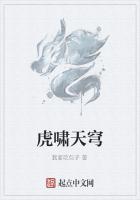Among the Central Esquimaux of North America the contest between representatives of summer and winter, which in Europe has long degenerated into a mere dramatic performance, is still kept up as a magical ceremony of which the avowed intention is to influence the weather. In autumn, when storms announce the approach of the dismal Arctic winter, the Esquimaux divide themselves into two parties called respectively the ptarmigans and the ducks, the ptarmigans comprising all persons born in winter, and the ducks all persons born in summer. A long rope of sealskin is then stretched out, and each party laying hold of one end of it seeks by tugging with might and main to drag the other party over to its side. If the ptarmigans get the worst of it, then summer has won the game and fine weather may be expected to prevail through the winter.
6. Death and Resurrection ofKostrubonko
I RUSSIA funeral ceremonies like those of Burying the Carnival and Carrying out Death are celebrated under the names, not of Death or the Carnival, but of certain mythic figures, Kostrubonko, Kostroma, Kupalo, Lada, and Yarilo. These Russian ceremonies are observed both in spring and at midsummer. Thus in Little Russia it used to be the custom at Eastertide to celebrate the funeral of a being called Kostrubonko, the deity of the spring.
A circle was formed of singers who moved slowly around a girl who lay on the ground as if dead, and as they went they sang:
'Dead, dead is our Kostrubonko!
Dead, dead is our dear one!' until the girl suddenly sprang up, on which the chorus joyfully exclaimed:
'Come to life, come to life has our Kostrubonko!
Come to life, come to life has our dear one!'
On the Eve of St. John (Midsummer Eve) a figure of Kupalo is made of straw and is dressed in woman's clothes, with a necklace and a floral crown. Then a tree is felled, and, after being decked with ribbons, is set up on some chosen spot. Near this tree, to which they give the name of Marena [Winter or Death], the straw figure is placed, together with a table, on which stand spirits and viands. Afterwards a bonfire is lit, and the young men and maidens jump over it in couples, carrying the figure with them. On the next day they strip the tree and the figure of their ornaments, and throw them both into a stream. On St. Peter's Day, the twenty-ninth of June, or on the following Sunday, the Funeral of Kostroma or of Lada or of Yarilo is celebrated in Russia. In the Governments of Penza and Simbirsk the funeral used to be represented as follows. A bonfire was kindled on the twenty-eighth of June, and on the next day the maidens chose one of their number to play the part of Kostroma. Her companions saluted her with deep obeisances, placed her on a board, and carried her to the bank of a stream. There they bathed her in the water, while the oldest girl made a basket of lime-tree bark and beat it like a drum. Then they returned to the village and ended the day with processions, games, and dances. In the Murom district Kostroma was represented by a straw figure dressed in woman's clothes and flowers. This was laid in a trough and carried with songs to the bank of a lake or river. Here the crowd divided into two sides, of which the one attacked and the other defended the figure. At last the assailants gained the day, stripped the figure of its dress and ornaments, tore it in pieces, trod the straw of which it was made under foot, and flung it into the stream; while the defenders of the figure hid their faces in their hands and pretended to bewail the death of Kostroma. In the district of Kostroma the burial of Yarilo was celebrated on the twenty-ninth or thirtieth of June. The people chose an old man and gave him a small coffin containing a Priapus-like figure representing Yarilo. This he carried out of the town, followed by women chanting dirges and expressing by their gestures grief and despair. In the open fields a grave was dug, and into it the figure was lowered amid weeping and wailing, after which games and dances were begun, calling to mind the funeral games celebrated in old times by the pagan Slavonians. In Little Russia the figure of Yarilo was laid in a coffin and carried through the streets after sunset surrounded by drunken women, who kept repeating mournfully, He is dead! he is dead! The men lifted and shook the figure as if they were trying to recall the dead man to life. Then they said to the women, Women, weep not. I know what is sweeter than honey. But the women continued to lament and chant, as they do at funerals. Of what was he guilty? He was so good. He will arise no more. O how shall we part from thee?
What is life without thee? Arise, if only for a brief hour. But he rises not, he not. At last the Yarilo was buried in a grave.
7. Death and Revival ofVegetation
THESE Russian customs are plainly of the same nature as those which in Austria and Germany are known as Carrying out Death. Therefore if the interpretation here adopted of the latter is right, the Russian Kostrubonko, Yarilo, and the rest must also have been originally embodiments of the spirit of vegetation, and their death must have been regarded as a necessary preliminary to their revival. The revival as a sequel to the death is enacted in the first of the ceremonies described, the death and resurrection of Kostrubonko. The reason why in some of these Russian ceremonies the death of the spirit of vegetation is celebrated at midsummer may be that the decline of summer is dated from Midsummer Day, after which the days begin to shorten, and the sun sets out on his downward journey:
To the darksome hollows Where the frosts of winter lie.
Such a turning-point of the year, when vegetation might be thought to share the incipient though still almost imperceptible decay of summer, might very well be chosen by primitive man as a fit moment for resorting to those magic rites by which he hopes to stay the decline, or at least to ensure the revival, of plant life.















